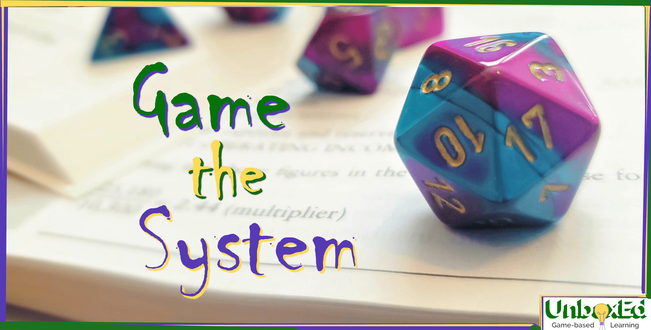|
How would you rate your curiosity? How often do you daydream? Is Googling an answer the same thing as satisfying a curiosity? Is curiosity innate in children or a skill that has to be taught and exercised?
What is curiosity? We don’t have an answer from an evolutionary standpoint, except that it’s likely a side-effect of our pattern-seeking brains. You can probably imagine plenty of anecdotes where an unresolved piece of information leaves you frustrated or pensive: missing the end of an engaging movie, a text that starts with, “I need to talk to you” followed by radio silence, or an all-but-completed puzzle with one piece missing. Human brains are designed to identify and solve patterns, even inventing them where they don’t exist. Curiosity may be the haranguing inside our minds when we encounter a gap in an informational puzzle. Especially when we know that an answer does exist. When we are unsure that an answer exists, the puzzle becomes a mystery, and engages our imagination. Imagination is possibly the tinkering with that puzzle using the information we do have. Or like dreams are the organization of our recent thoughts in an aesthetic manner, curiosity and imagination could be the aesthetic loading screen of our brains transferring information from short-term to long-term memory. So where does curiosity come from? As with all education, curiosity develops best once the undergirding emotional needs are met. Curiosity competes for bandwidth in our brain against fear and anxiety, especially a fear of failure, which we have written about exhaustively in regards to school culture. A healthy environment for curiosity also requires a wide base of knowledge, which we use to make inter-connections, identify and ask questions about where the gaps in our information exist. But curiosity also requires a bit of modesty – knowing enough to know what we don’t know, but not too much that we feel certain about the information we do have. Skepticism is a friendly pairing to curiosity, and vice versa. Research has noted that households that ask questions beget curious children. It’s not simply in the act of helping with homework, reading to kids, or answering their myriad of questions, but the process of picking their young brains as well, testing the limits of their knowledge and asking them to begin considering the approach between puzzles and mysteries. Puzzles have a solution; the pleasure is the path. Mysteries may never be solved; the pleasure is in the exploration. Either way, cultivating an excitement for what you want to know first requires cultivating an appreciation for what you don’t know. Curiosity also comes from an appreciation for effort. Research shows that completing harder tasks is correlated with more engagement in that topic. This is also explained in our article about flow state and the difference between challenge and difficulty. Is curiosity under threat? Potentially. Let’s look at a 3rd grade student in a low-income setting. Last fall was their first time in a classroom since kindergarten. They had limited access to materials in order to keep pace with their virtual learning. Parents were far more likely to be working multiple jobs and/or frontline workers who were unable to work from home. There are fewer books in the home. Even a sixth grader in our class this past semester couldn’t remember a single book he’d read in the past two years. That’s not yet counting the literacy and numeracy skills they missed in the past two years. At the same time, digital consumption continues to grow. Children average ten hours of screen time per day, with low-income households averaging 1.5 hours higher per day, and growing. Thus, their interactivity with what they are consuming is becoming a one-way highway. There is little downtime or unstructured thinking time necessary to transfer information from short-term to long-term memory. At a time when information is immediately available, least reliable, and as a culture we are at the height of being uncomfortable with most forms of uncertainty. Curiosity and truth are at odds with instant gratification and superficial answers. But again, as we propose in our article about self-efficacy and game addiction, how you interact with those digital components does matter. Researcher Ian Leslie states, “The internet is making smart people smarter and dumb people dumber.” How? Googling is a useful tool, but it’s also problematically pragmatic. You don’t have to digest the question to answer it, nor do you have to digest the answer before moving onto another search query or stimulus. You don’t have to make predictions or create mind maps or engage your knowledge base of related information to make connections and deductions. For knowledge to be shifted from our short-term memory banks to long-term, we need that process to digest, settle, and organize information to grow our database and make those important links between neurons, where new bits are stored that eventually overflow and lead to breakthroughs in understanding. What are the consequences of an incurious culture? Critics argue that we don’t need long-term memory anymore because any needed information is accessible at our fingertips. That would be fine if everything we do from now on is algorithmic, but that ignores the richer, wider world of narrative thinking, of creative expression, of insight, of novel problem solving, and of emotional interactions where there are no immediate precedents or literature. It also precludes the ability to discern puzzles from mysteries, which engage our imagination, to distill what we want to know from what we don’t know, to cultivate skepticism, and to have the foundation to question those answers we so readily rely on. Go back to the third grader who can barely read and has barely read any books. We think imagination is a natural talent in children, but where would it come from? From the practice of visualizing things in their brain that aren’t really there. Where do they get that from? Books, probably. From time to sit and daydream or social pretend with other children in high-input environments with toys, games and outdoor play. If kids grow up with a greatly reduced ability to conceive of things that aren’t there, where could that lead? Besides the obvious lack of cultural, political and technological innovation, fewer works of art, fewer events of creative destruction, less insistence on replacing deprecated institutions with more modern institutions. What about a revolutionary spirit? The willingness not to accept the status quo, to imagine a different fate or future. Skepticism, critical thought. Reverse engineering what is factual and what is theoretical. Deconstructing the possibility that something that appears true, may not be. Holding in our mind both a conviction and the space for new information. Strong opinions, lightly held. Combatting our own biases; awareness of our lacking. Empathy, imagining human experiences vastly different than your own, disparate cultures, ideas, attitudes, upbringings, values, backgrounds that you’ve never thought of before. Mental health. Imagination as the ability to see a way out of depression, heartbreak, low self-esteem; to imagine what healing feels like, imagining a light at the end of the tunnel, conceiving of a different version of yourself, dreaming of who you want to be and the steps it takes to become it. Visualizing different choices than you’ve ever made before. Optimism. Having no other reason to maintain hope other than you can imagine a happy ending. So how do we get it back? One thing to pay attention to, especially in education, is how we reward and punish learning. Rewards can be just as tricky as punishments. Schools in New York and Chicago found no change in test scores when they literally offered to pay students hundreds of dollars if they got A’s on their standardized tests; yet the schools in Dallas that instead paid students for attendance and turning in homework saw marked improvements in test scores; however, Washington schools saw no change in test scores when introducing the same incentives. But did this instill any intrinsic interest in learning versus a view that learning should be compensated? A study in India found that introducing rewards too high produced lower performance. When assigning a difficult task, offering 5 months salary for completion resulted in worse performance than two weeks salary. The stakes were too high. This is why legendary athletes are scarce: they can consistently cope with those immense pressures. Punishments can also be tricky as you switch between the realms of intrinsic and extrinsic motivation. A daycare in Israel grew tired of parents picking up their children late, and instituted a fine for all late-comers. This new system actually saw the number of late parents increase, theoretically because the school had then re-defined the transgression from an intrinsic moral punishment to an extrinsic economic punishment, which more people were willing to accept. The battle of extrinsic and intrinsic rewards and punishments needs a lot more research. Too much extrinsic reward undermines intrinsic motivation and dampens curiosity. Not enough can neglect a need for feedback, validation and incentives for students without a developed internal drive. Exploration and self-directed learning could go a long way. Goal-driven versus experience-driven tasks often find that students perform better over the short-term when given a defined objective, but perform better over a longer-period of time and show a greater personal interest in the subject when they are allowed to explore it without objectives attached. Meta Practice is also a new theory in neuropsychology that can be applicable. It is the idea of practicing how we practice. When it comes to developing a skill or habit, our brains have a gatekeeper that at times blocks messages being sent from our brain if it relates to an activity we associate with unpleasant feelings. This can relate to dieting, exercise, or learning a difficult subject. It also explains why reducing sugar or fatty intake and breaking addictions can be so hard: for as long we perceive the act itself, and not the aftermath, as pleasurable, our brain will regard it with positive momentum, no matter how regrettable or ill we feel after the act. Meta Practice is the idea of being more present with how we train that skill or habit that we are trying to develop or break. In the case of learning, creating a warm-up routine, a thorough but casual debriefing, and mixing in movement or mindfulness breaks can punctuate feelings of pleasure into the learning process. Autonomy and self-exploration also have higher rates of pleasure associated with them. As does carving out time for daydreaming, unstructured thought, letting ourselves dwell in the discomfort of admitting, “I don’t know. I’ll have to think about that,” and resisting the instinct to convince ourselves of an answer because it's easier than starting down a mystery.
0 Comments
I recently asked a friend of mine, during a career transition, what his dream job was. He considered it for a long time, as if he had never thought about it before. Almost as if he was trying to imagine a different version of himself who had the freedom to pursue a career based on his passions. He ended up answering with something practical, profitable, and not far off of his current career path. I reframed the question to ask, “If you went back in time to re-do college, what would you study?” It’s a question I enjoy daydreaming about and asking new acquaintances. Personally, I imagine studying architecture or food science. Every time I see chocolate being made I feel an artisanal pang to do it, as does the prospect of being a flavor meister at Jelly Belly. This month I wanted to ditch the royal "we," data and supplemental media (mostly) and write something personal, about passion. After taking a break from social media and blog articles in August, due to a lot of activity with contracts and curriculum for the new semester, vendor fairs and expos, and our first round of hiring instructors, I came to the point of having to accept how many hats I can sustainably wear. In the past month, the topic of passion has resurfaced over and over again. As someone who just started designing their dream job in middle-age, I wanted to share aspects of my own journey with passion, the founding of a nonprofit, and the educational community. To my comfort, I learned that middle-age is the best time to become an entrepreneur. Media and the celebrity of college-dropouts-come-tech-titans have given us this impression that entrepreneurship is a young person’s game. But consider it. I spend a lot of time around youth, and one thing that stands out right away is that they’re pretty bad at most stuff. Contrast that to someone with 20 years of experience in an industry, who knows its needs and gaps, has their ducks in a row, and has experienced enough failure to know that failure is a part of the process. For this reason, the vast majority of successful entrepreneurs happen to be middle-aged. As it happens, I have a half-dozen middle-aged friends starting various business as well. I’ve started a resource group to support each other, which we call Dreamers & Schemers. We talk frequently about feeling overwhelmed at times, and doubtful. But those have both been the exception to the experience of waking up most mornings with enthusiasm and heartfire. As another symptom of middle age, I have a good handle on my discipline and boundaries. I work an 8 – 5 exclusively. That includes gym and errands. Occasionally work creeps up to 5:30, but only because I’m in a flow state and enjoying what I’m working on. I find it easy to follow my interests and instinct, and draw a line between work and life. And I have a wonderful wife and friends who provide enormous support. August also marked our anniversary as a company. In that year I’ve transitioned from dreading and doubting my decision to form UnboxEd as a nonprofit to now defending and counseling people who are nervous about embarking on the nonprofit route. The simplest thing I can say is that the first year has been way simpler than I anticipated. That may not be true for the coming years, but I feel more than prepared for what they bring on the nonprofit front. And I’m happy to share resources and guidance separately. Chasing one’s passion not only seems scarce in the professional setting, but it’s needed now more than ever. Despite the uptick in business creation during the pandemic, small business starts have been declining for decades. This has a huge impact on worker satisfaction, wage gaps, pricing power of companies, and more importantly to me, community cohesion and reinvestment. One thing I admire about Austin is its culture on sustaining and valuing local businesses. I firmly believe that practical jobs are going to disappear to automation and AI faster than we realize. Which makes me think that most people will have less and less to lose through chasing a passion, and starting early, often and less unequipped than they’d like; all the while society will need more and more passionate people doing creative things that automation cannot replace and that invite people into a human, purposeful community. Unemployment is correlated with a lack of attendance at religious and social events. People tend to withdraw when they don’t feel as if they are contributing to society. I believe that is a problem we will need to address relatively soon, on a surprising scale. The People I Mostly Admire is a valuable podcast for hearing from successful people who have chased their passion and where it led them. Andrew Yang’s interview talks specifically about the dire need for passionate creators. I mentioned failure earlier, as a distinction between youth and maturity. It’s maybe more of a double-edge sword than I considered. One on hand, as we go through life, failure becomes more practiced, as does wisdom in response to it. Yet there is one looming fear that entrepreneurs take on, I think, which is the danger of identifying with failure. “If this thing fails, if I give it my best and it isn’t good enough, there will be no one else to blame, no other excuse except my inadequacy. What does that say about me? Am I good enough? What next? I won’t even have a dream job to fantasize about.” Yeah, I don’t know. I haven’t conquered that fear yet. It still grips me from time to time. Especially, ironically, when things are going well. When there’s so much on my plate and it all falls to me. Some days I think, “I could quit now, call it a moderate success, keep it in my pocket and go back to something more streamlined, anonymous and flexible.” Maybe that fear will always be there. Beats me. If you find any good advice for this one, let me know. But small victories, and gratitude. Those are instrumental. I bought a new printer and office chair this week while I waited on a vital contract that was 15 days-and-counting delayed. I am very excited about those additions to our team. The next time I need a boost, I’m going to let myself daydream about buying a sweet paper cutter, too. The last article we published, focusing on Literacy, dealt with a lot of these themes: identifying one’s heartfire, visualizing that it is achievable for this version of you in this reality, what it takes to chase it, and how to develop each of those tools. It’s lofty and ambitious, but that is truly our mission. When I think of students, I do not think of college and jobs and global problems. Community and citizenry and creativity is inseparable to me from their and our future. Leaving room for what we haven’t the context to envision. But that’s our journey. That’s where we’re at, where I’m at. As ever, and also part of our mission, what doesn’t sound better as a story? To speak about life’s cycles and kismet and validation and gratitude, let me introduce you to Felix. Felix was one of our first hires that we made this semester. He’ll be joining me in our Social-Emotional Storytelling class. I happened to meet Felix when he was 9 or 10. He’s 20-something now. He was a student in my first-ever afterschool D&D club, over a decade ago. A few months ago he found me on LinkedIn via an article I wrote about D&D in the classroom. He reached out, informed me that he and 4 or 5 other former students still played D&D weekly, and invited me to join a game. I jumped at the chance, enjoyed an at-times awkward but mostly amazing reunion with my old students, and proceeded to mercilessly derail Felix’s 5-hour campaign as the sort of payback that all teachers dream of. Yet, the initiative, the experience, the passion, left such an impression on me that the following week, when I needed to hire two new instructors for the program, he was the first person I called. Welcome to UnboxEd, Felix. Here is a short interview to introduce you to his own journey: Felix, Professional Game Master/Instructor Stefan: Describe your dream job.
Felix: For the longest time I believed my creative dreams, whether it be doctor or astronaut or inventor, were unobtainable. In other words, I viewed them as things that only happened to people in movies. Today, I'm asked a question I used to find terribly difficult to answer, and I face it with confidence. I WANT TO BE A WRITER. (The capital letters indicate that I’m shouting it from the rooftops.) Regularly, I would have just said author, but I feel like I want my creative agency to span into multiple categories. Whether it be Dungeons & Dragons, or screenplays or novels. I believe that it is my goal to create a story that will make whomever interacts with it feel every emotion, and I believe that I have the skills to do it. Stefan: Lame. (Just kidding.) Speaking of D&D, what benefits from D&D and RPGs in general have you seen in your life? Felix: Lots of English teachers over the years would tell me how wildly creative I was; I had a significant amount of family members that wrote professionally, and much more. But the one memory I tie closest to when my brain switched and told me that every job (specifically creative jobs) were obtainable to me, was when my elementary Dungeons & Dragons teacher allowed me to run a campaign. It was horrible, absolutely awful. Some of the worst written stuff I've ever seen. I'm pretty sure it was based off of a video game, and it didn't make any sense. But I loved every second of it. I cherish that memory despite wanting to permanently erase it from my mind due to how embarrassing it was. Something about that moment of having agency over a creative project really took over in my mind. I would scribble short stories in my notebook every day. Once that moment had happened, I started caring so much more about the games we played. I started to realize that even when I was a player I was still creating and telling my own story. I feel like D&D is the biggest reason I got back into writing books. I had given up for so long because I felt once again that it was too far of a dream to achieve, but running a roleplaying game gave me the halfway point between playing games and writing a novel. I realized it didn't feel difficult to write and I started writing again in both mediums. Stefan: Everyone’s going to think I coached you to say that. So now you’re back, on the other side of the table. Why? What do you hope to accomplish as an instructor? Felix: To ensure that everyone is having fun, and that at the end of the campaign, there are memorable story moments that every player will remember. You have to recognize that the story is not entirely focused on you alone, and that if you make it that way, the people around you won't have fun. It is also your job to make sure that your fellow players are feeling comfortable. If they feel like they can't speak up, or feel outcast, it's your duty to bring them in. If everyone around me is happy, I typically feel happy and fulfilled. So when I come into the world of education, I want to start off simple. Making sure the kids I work with are enjoying themselves. If every player is happy, the lessons will come naturally. If they are happy together, I believe that teamwork will naturally form. Stefan: You’ve worked in social work/healthcare, but you're somewhat of an outsider to the educational side of our mission. What has made an impression on you thus far? What unique vision do you hope to bring to game-based learning? Felix: I think that I am unique in my experience being on the other side of the program. My whole future became filled with more options because it opened up the possibility of having a different future than the one I thought I was unwillingly destined to follow. I want the kids I work with to realize that the things they experience in the game can be applied to real life. They can be so much more than the path they are expected to follow. If they enjoy helping people in the game I want to be able to turn that around and have them realize that they can have a job in the future where they help people. Stefan: Wow, you have no idea how suspiciously that ties into the theme of the article I’m writing. Thank you, Felix. Most people probably think about literacy as the competency to read and write. For many educators, their first thought probably drums up SpEd interventions, breakthroughs, small group learning, particular students who have struggled or succeeded in their care: they see the trenches of the literacy battlefield. They know that illiteracy reduces the world to a fraction of its richness; they see the opportunities and light that open up for a child once they access a new form of communication. Literacy is possibly the humanization of a student. We want to speak about literacy in this larger context. We’ll start broad, as always, and shamelessly theoretical, and work our way down to what all of this has to do with games. (Spoiler: it mostly doesn’t.) All with the caveat -- and disclaimer -- that this one might get more spiritual than usual. One of the reasons UnboxEd chooses to operate in magical worlds, is the attempt to reflect the magic in our own. Is there a difference between magic actually existing, and living your life as if it does? Through this lens, we see literacy as synonymous with imagination, the measure of a student’s universe, the quality of opportunities and functioning within their community, and exploration of new cognitive and ideological pathways. Three examples come to mind when we broaden literacy. One from a RadioLab podcast on the Power of Words. The first time a new language emerged in recorded history happened in Guatemala in the late 70s. Children at the country’s first deaf school invented their own sign language. As generations of students passed through, expanding the language’s vocabulary over time, lingual studies found that 1) the current students, with access to a greater volume of words, had a far more developed cognitive, creative and emotional capacity than former students; and 2) as the younger generations socialized with former students at deaf recreation centers and taught them new words, the former students’ neural networks grew to match the younger generations. Greater access to words can literally open up new connections, ideas, and emotional understanding. Literacy expands your mind. Secondly, we recently learned that many scientific discoveries, especially in the realm of neuroscience and micro and cellular biology, were catalyzed simply by the means of a clearer picture. The advent of microscopes ushered in a flurry of scientific discoveries, as did the increased accuracy of medical illustrations. It seems almost silly, but the act of seeing things more clearly, in new dimensions, and with greater fidelity, sparked inspiration and more imaginative theories as to how those building blocks interacted beyond the page. Literacy is clarity. To bring it back to games, it lastly calls to mind an experiment that the goddess of game-based learning, Jane McGonigal, conducted over ten years ago and describes in her book, Imaginable. She created a simulation of a pandemic and for months participants played out choices within that crisis. The fruit of that study didn’t ripen until a decade later, when she found that the participants of that experience had suffered far less anxiety, stress and depression than the average citizen during this current pandemic. Literacy is schema. In the book Actual Minds, Possible Worlds (which we otherwise don’t recommend), Jerome Bruner describes how learning culture is created through the power of language. He studied the modals (bundles of words or phrases) that teachers used, and found that they correlated to a student’s perception of learning. Modals indicating a lack of confidence, or uncertainty, or disinterest, “might, could, maybe, sort of” transferred those same attitudes into students. While modals of passion, excitement and conviction created those same sensations in students. Here, the power of literacy wasn’t in transferring a concept as effectively as possible, but in inviting the student to step into the pleasure of passion, and extend their world of wonder and possibility. He labels this bridge created by language a “loan of consciousness,” (aligning and building on Vygotsky’s Zone of Proximal Development), and describes his own obsessed, inspiring chemistry teacher not as a transmission device, but as a human event. Where all of this collided for us was the results of an innocuous warm-up we posed in our Entrepre-newbies class. One day we asked, “What is your dream job?” We assumed answers would come back reminiscent of our own childhood: doctor, teacher, artist, whatever amoebic business-thing our dads did. Instead, over 50% of the answers cited a job in the fast food industry. Another quarter referenced social media fame. One girl wrote “lawyer,” and added, “I wrote what I thought you wanted me to write.” That was eye-opening: our students’ vocabulary of opportunities consisted of either the world that immediately surrounded them, the world they escaped to, or the world they felt they looked in on from the outside. Not a world they freely imagined. When people think a goal is unobtainable, they are less motivated to work toward that goal. That’s not just common sense, it’s economical. It’s why a privileged childhood is full of platitudes of “putting your mind to something” and “dreaming big” and “shooting for the moon.” It becomes self-fulfilling. The important part is not the goal itself, but the language of achievement and possibility. Put more eloquently, Lisa Bu's rather boring TED talk ends with one of the most inspirational and rational messages we’ve ever heard: “Coming true is not only the purpose of a dream. It's most important purpose is to get us in touch with where dreams come from… even a shattered dream can do that for you.” Many people don’t have to practice dreaming. It’s similar to success, genius, or happiness in that way. Once we begin to “other” it, instead of seeing the hard work, struggle and cultivation behind it, we shelf it away as inaccessible. For some demographics, dreaming of something bigger is a literacy problem. We started Entrepre-newbies because we saw that, like struggling readers, many of our students, as well as their parents (and even our own colleagues), faced a similar effacement of ownership. They claimed economics was too complicated or might as well have been a foreign language. How many times have we all heard that about math? About logic and scientific principles? About therapy, analyzing literature, or social-emotional wellness? (Specific to SEL, we invite you to check out our appearance at the International Literacy Association’s panel on D&D for Social-Emotional Literacy.) Also, as for calling them “soft skills,” that’s dumb; let’s quit. Communication and interpersonal competence take hard work and practice. They are the concrete foundation on which learning, creativity and wellness are built. Empathy is literacy. Someone walking out of a car dealership or buying a home with a predatory loan is a literacy problem. Not understanding debt, credit cards, depreciation, loan interest, or the power of investing and compound interest, is a literacy problem. Beyond dreaming, beyond practical, beyond economical, literacy is the language of both negotiation and education. A literate mind can engage in fruitful debate; it can hold both a mind open to new information as well as a conviction. It can recognize and address dissonance, or discover the tool that can. When we think of education as a cultural, community and civil institution, we think of it as a forum: a stance open to counter-stance. (See also: Democratization of the Classroom.) The ability to inform one’s self begets a desire to be better informed. For those to whom literacy came easily, they don’t often think about the struggle it takes for others to arrive; and more likely, they also forget that there was no external force or system telling them that it didn’t belong to them. We had a student in our Entrepre-newbies class who had a learning disability. He barely graduated 5th grade. Within our group, he volunteered for a surprising responsibility, when the expansion of our fantasy business required one player to study chemical and electrical engineering at a university, in order to invent a magical battery. For two months, he stayed after school twice a week to attend college in a game world. He solved all the challenges we threw at him, graduated and invented a battery that opened up a hundred new possibilities for the business. The pride was beaming, but the cheers were cut short, because we had so many new ideas to pursue. We talked to the student after group that day, to congratulate him and ask if engineering was an actual interest of his; if he might study engineering in real life, given how proud it made him feel. “No,” he said, conclusively. “I’m not one of the smart kids.” So what’s the point? Why did us game folks spend a whole article talking about language? Did it do anything for that student above? Honestly, we don’t know. Game-based learning is not a silver bullet. SEL especially takes time. We can only hope he keeps absorbing wondrous language, and finding the right human events. Literacy has less to do with games as much as it has to do with our mission. There are two ways to think about the brain, its Pragmatic Mode and its Narrative Mode. Pragmatic mode is computational, functional, rational. It solves problems accurately and efficiently. It gets you an answer, but it will never operate in a way that makes 1+1 equal more than 2. Narrative mode is meandering, chaotic, not necessarily practical. But it can create meaning. It can create answers that equal more than their sum. It can imagine. It can dream. Essentially, it can lie to us. It can tell us awful stories that strip us of our agency; and it can tell us improbable stories that hold epiphanies we’ve never considered before, build fantasy worlds that create real heroes, expose fallacies that reveal hard truths, and dream of possibilities greater than our circumstances. Now that summer has officially arrived, we are proud to announce a new milestone for UnboxEd: due to demand, we are launching our first official fundraiser to meet all of our fall, spring and summer goals. The fundraiser is running June 22nd through July 20th and can be found here:
Our GiveButter donation page! We invite you to visit our donation page, hear more of our story, see what we’ve built during the last year and where we hope to go, and consider supporting us by donating or sharing the message with others. All proceeds from the drive will be used toward:
We've included the flyer for the donation drive to share on social media, or with anyone you feel may see the value of UnboxEd, as well as any local business that might be interested in sponsorship. Thank you for all of your support and faith thus far. It has been a banner year and we're excited to start dreaming even bigger. In the gaming industry, there is no shortage of definitions for “game” or “play.” This article isn’t overly concerned with the what, as much as asking why we play, and the various ways in which we’ve studied how we play. There is also no shortage of the studies of play. The American Psychological Association found that children who engaged in active play for 1 hour per day were better able to think creatively and multitask. Gamers also exhibited more emotional resilience during conflicts. Columbia University showed that physical play in 7- to 9-year-olds enhanced attentional inhibition (patience, focus and organization) and cognitive flexibility (the ability to grasp concepts more quickly as well as make connections and switch between concepts). As for why we play: essentially, play is practice. Given that play can be as abstracted, imaginative and social as we desire, play can better prepare us for nearly every realm of life. What gives play that power is the intention of meaningful discovery in a safe environment through the process of trial and error. The greatest benefit to play might be its attitude toward failure. So if play is inseparable from failure, and education is inseparable from play, shouldn’t failure be inseparable from education? Our experience tells us that students are far more likely to view failure as inseparable from finality. Meaningful Discovery The field of play is a field of discovery, and also catharsis. Rough, sporting, and competitive play enables people to safely explore multiple boundaries within the parameters of a game. Consequences are temporary. There is research linking the cessation of sporting activities during the pandemic with a rise in violence. Healthy conflict fosters communication, negotiation, fairness, and emotional regulation. It also stokes a curiosity for risk-taking (one of our Guiding Principles) while developing empathy as young minds learn the dual nature of harm. Another benefit it that play supports mental visualization. Make-believe. Through a series of experiments, researchers showed that students in small groups who explored a new concept before a lecture measured stronger comprehension than those who experienced the lecture before self-exploration. This has been reproduced in pre-schoolers better enumerating uses for an object pre vs. post instruction. Because they encountered more Productive Failure, thus iteration, students who began their learning without direct intervention developed more semantic knowledge and transference. Learning through play establishes personal connections of how and when to apply new concepts. Scaffolding Conversely, guided play, also called scaffolding, has supporting research as well. A famous researcher in the education world, Vygotsky, theorized that the most efficient learning occurs when a teacher is present to scaffold content in a way that resonates with and builds on top of a student’s prior experiences. Cambridge University used this concept in game-based learning to find that centering play around a defined goal, while allowing children to try various paths toward reaching that goal, did benefit their comprehension better than either self-exploration or direct instruction. For many of us, a “serve-and-return” form of play does begin from birth and follows us through much of our adolescence. Consider how much nonverbal communication and interaction transpires before a child learns to speak. Smiling, laughing, cooing, fear, discomfort and doubt can all lead to a reciprocal dance between child and parent. Social and Role Play Sociodramatic play is when children act out the roles of adulthood from having observed the behavior of adults. Studies suggest that this function of play is to build a prosocial brain that mimics effective peer interactions. Rats that were deprived of play as pups not only were less competent at navigating mazes later on, but their medial pre-frontal cortex was significantly less mature, suggesting that play deprivation actually stunts physical brain development. Rats with reduced access to play acted less socially and communally when they encountered other rats later in life. The concept of development and maturity is especially important, as some of the health effects of social play can’t be seen in the immediate or even medium term. A Berkeley study found that third-grade prosocial interaction correlated with those students’ eighth-grade reading and math outcomes better than with their third-grade reading and math outcomes. Fun: It Keeps You From Being a Grumpy Jerk Play and stress are also closely linked. Higher amounts of play are associated with lower levels of cortisol (stress chemicals). Play also activates norepinephrine, which facilitates synaptic connections and improves brain plasticity. The maturing of the pre-frontal cortex, as shown previously in lab rats, moderates the impulsiveness, emotionality, and aggression of the amygdala. Let’s translate all that. Taken place in a safe environment, play lowers stress, stimulates chemicals that help the brain learn, and during times of conflict and adversity provides a template for resilience, judgment and maturity against our primal impulses. Theoretically, play may be an effective therapy to an overactive amygdala, aggression, and uncontrolled emotions that result from childhood adversity, stress and trauma. This is likely why role play can be such a useful tool for developing empathy. To Screen or Not to Screen? Now that we’ve established so much goodness around play, a secondary topic emerges: video games versus in-person games. The bulk of studies in the gaming world center around video games, due to the fact that video game companies can and do pour a lot of money into research to defend and extol the benefits of gaming. Many reliable studies have found that video game players do show higher intellectual functioning, higher academic achievement, better peer relationships, and fewer mental health difficulties than non-gamers – though at this point, upwards of 75% of the population may fall into the casual gaming category. Parsing out the difference in quality between types of gaming is harder. One Berkeley study did compare traditional and digital toys, and found that traditional toys were associated with an increased quality and quantity of language development compared with electronic toys, particularly against solo electronic toys. In social pretend play, without the aid of a digital setting, children must collaborate on an environment and assign roles, which improves their ability to reason about hypothetical events. Digital media, if supported by scaffolding or co-play with peers, may have similar benefits, though the thinnest barrier between human-to-human interaction likely remains the best environment for learning. As humans are naturally communal, combinatorial innovation is far more likely to occur and spread through physical proximity. Good Failing and Bad Failing We spoke previously about the idea of Productive Failure and how it stoked creativity, problem solving and comprehension. The caveat to those findings is crucial: the consequences of failure cannot be perceived as too great, i.e. how most every student in the public education system perceives failing. Instead of creating an atmosphere where failure means trial and error, iteration, semantic connections and growth, failure has become a looming threat. This leads to performance avoidance, where instead of pursuing knowledge for its applications, interests or value, students perform only as well as sees them avoid punishment. They may never achieve a path to intrinsic motivation or independent learning, and may always rely on external incentives. In the world of game design, the only time a designer implements a system that subtracts is to introduce tension to the player experience. A timer counting down, running out of ammo, or losing all your money. This is the experience students encounter at school five days a week.
The value of grades and test scores holds their agency (another Guiding Principle) hostage. Supposedly, Google allows engineers to spend 20% of their office time on any project they desire, whether or not it’s related to work (though undoubtedly Google has a right to anything that is produced). As a result, productivity and retention are high, while upwards of 50% of their commercial projects come from employees pursuing an outside interest. Some schools have adopted this system by letting students study interests and hobbies unrelated to curriculum. Turning education back into play. They have shown reduced drop-out rates, improved behavior, boosted grades, and increased motivation. We are very interested in asking those students the original question, “How important is failure?” (AKA the one where you realize you might be more addicted to games than your kids) In an earlier blog post, we covered the myth that violent games create violent attitudes. Our previous article dealt with the myth that games inhibit productivity, as we discovered why so many young people turn to games not as an escape but as a source of self-efficacy. Today we want to discuss an important distinction within the gaming world: when and why games become addictive. We’ll introduce the different types and qualities of fun, what happens in our brains during those forms of stimulation, and how many popular games – and media -- have learned to manipulate just that. Nicole Lazzaro is a researcher who earned her success by theorizing the ‘4 types of fun’ almost 20 years ago. Her work has become canon for many game and UX (user experience) designers. Based on mapping the emotional responses of gamers, she bucketed fun into 4 categories: Fun of Novelty, People Fun, Fiero (Accomplishment), and Flow (Engagement). Novelty, also known as Easy Fun, is the surprise and delight commonly associated with simple, light games and activities. This is the fun that comes from stimulating our curiosity and creativity, allowing us to explore new worlds, engage in discovery, and invent. It’s the basis of role play and imagination, where we can experiment with identity and sampling new characteristics. The reward for Novelty is innovation. In a study of preschoolers who were asked to define the utility of a group of random objects, researchers compared children who studied the objects independently versus children who were first offered direction by an adult. The children who were allowed to engage with the objects through play named an average of 3 times as many nonstandard uses for the objects compared with children who were given a guided approach to the objects. This segues into the second realm of fun, Flow. This sort of fun is all about zen engagement and hyper-focus, and aligns with one of the foundational pillars of Self-Determination Theory, Agency, which we spoke of in depth in our prior article. Flow is the optimal blend of challenge and reward that players require to maintain a constant state of immersion. To achieve this, a game or activity needs to first succeed at offering the player visibility into all of his or her choices and abilities. Players must feel that they have the knowledge and skill to affect the world. This creates self-efficacy. Self-efficacy creates intrinsic motivation. However, games are also masterful sources of extrinsic motivation. Their feedback systems record and reward the history of a player’s past achievements, and constantly generate new tasks and new rewards designed to match the player’s growing abilities, all while offering the player immediate visibility as to how each of his or her decisions affects the environment; most specifically, reinforcing which actions will earn the player his or her next reward. This creates a constant state of progression and anticipation, which releases vast amounts of dopamine, a chemical in the brain that transmits feelings of pleasure and motivation.
If Flow is a dopamine drip, Fiero is a firehose. Fiero, Italian for “proud, fierce, and bold” is the type of fun that is intense, earned, scarce and explosive. Fiero is that underdog moment when against great odds, a player achieves an improbable victory and hurtles his arms in the air and shouts, “Finally!” Fiero is achievement fun, and requires that the Flow state be skewed toward the frustrating end of the spectrum. Fiero can’t be achieved without first dragging the player dangerously close to the point of rage-quitting. Fiero also fulfills another pillar of the Self-Determination Theory, Competency. Using the Flow model of progression, games and play are excellent facilitators of learning. We’ve previously spoken about distributed practice and knowledge checks; when added to powerful intrinsic and extrinsic motivators, games expand a player’s cognitive performance in ways that the educational system ought to be envious of. Not only does play activate norepinephrine, which activates alertness and improves brain plasticity, but higher amounts of play are correlated to lower levels of cortisol. Play reduces stress. Can it reduce anxiety too? Research does show that the neuroplasticity created through games allows players to apply their analytical and problem-solving competencies to everyday contexts, reducing their anxiety when encountering unfamiliar real-world situations. Anecdotally, we have worked with many Special Ed students and children on the autism spectrum who first escaped into games to combat their social anxieties, and wound up learning the communication, emotional and analytic skills that allow them to succeed in social situations. A great segue to the final mode of fun, People Fun. This is the general satisfaction of creating a brief, dynamic community with strangers or loved ones around a shared experience. Games stimulate all sorts of social emotions, including Schadenfreude (the enjoyment of another’s misfortune), Naches (the pride of seeing a peer succeed), teamwork, healthy competition, and sportsmanship. This completes the Self-Determination pillars, adding Relatedness. Just as in solo play, People Fun is the result of another neurotransmitter, the hormone oxytocin, which is a brain chemical associated with social bonding, trust and empathy. Even virtual games can stimulate oxytocin (though, have a listen to this podcast with Jamie Madigan where he discusses the psychology of online friends and how they fulfill about 80% of our social needs, but aren’t quite a full substitute for physical friendships.) That all sounds like a bunch of positives, so where’s the dark side? How does addiction manifest? By now we are all familiar with the corrupting potential of social media, not to mention drugs. Games rely on, and are designed to manipulate, the same chemicals that cause other addictions. Dopamine operates under the principle of tolerance. The more of it we release, the more of it we need to feel the same degree of pleasure. Many popular games literally turn this into an economy. To keep up their dopamine levels, players constantly feel compelled toward new rewards, new environments, new aesthetics, and new challenges. Some game companies make you pay for every inch of it. Loot boxes, weapon upgrades, avatar skins, sequels, prequels, supplemental Downloadable Content (DLCs). To maintain Flow and the progressive sense of validation, not to mention tangible rewards, players can become physically and mentally addicted to the anticipation and stimulation of new elements of the game, and pay continuously for it. What’s worse, is that at some point it stops registering as fun. While dopamine is associated with pleasure, it doesn’t automatically create positive emotions, as it’s equally aligned with motivation. That motivation can also produce stress, frustration, resentment and regret. Many players who are addicted to games as simple as Candy Crush and Farmville express negative emotions after continuously paying tens or hundreds of dollars to progress in the game. Oxytocin is another, more familiar culprit. When you see a new Like, tag, or message on social media, the feeling of joy comes from the same chemical as Social Fun, oxytocin. Oxytocin, like dopamine, requires higher and higher doses. The same research used in games and UX produced the addicting aspects of social media. The same research also designed touch screens to use the same intimate gestures we share with loved ones. Indeed, your brain registers the way you touch your phone as a signal of bonding. The same research, same principles, same input, same output, same manipulation. Might as well consider it all a game experience. Or rather, a gamed experience. When you’re wondering if your kids are addicted to games or media, teach them to ask themselves these questions. Then ask yourself the same. Do you reflexively open a game, website or app and realize you had closed it moments earlier? While using a particular game, website or app, do you feel: Energized, or empty? Joy, or stimulation? Excited, or compelled? When you close a particular game, website or app, how do you feel? While there are different forms of fun, born from different antecedents, as a whole, I’m not sure we draw an honest line between our expectations and our outcomes when it comes to small but daily interactions with media. One of our favorite aphorisms here is, "Practice like you play." If we may re-interpret it, a routine check-in with ourselves may be necessary to make sure that we stay present with the virtues of play. We suggest, "Practice why you play." Learning Setting (SEL) There’s a notable study where preschoolers were instructed to wait alone in a room with a piece of candy, and promised a second piece of candy if they chose not to eat the first until the proctor returned. The preschoolers with the self-control to wait for the larger reward showed higher academic performance throughout adolescence. Pretty unremarkable stuff. Recently, a preface study was added to this experiment. Before the candy phase, the children waited in the room with drawing paper and a box of broken crayons. The proctor promised to bring each child a new box of crayons, but only half the children ever received one. Advancing to the candy phase, the preschoolers who had not received the promised crayons were 5 times more likely to eat the first piece of candy than children whose crayon promise had been fulfilled. Pretty powerful stuff.
A deficit of trust is the daily experience of an enormous number of students. Academics aside, this has huge implications on their mental health, as we see a rise in suicides, anxiety levels and mental health disorders in children aged 8-15. One colleague put it best when he said that the average student is in a constant state of “coping.” Learning Outcomes (FTW) Academics to the fore, let’s connect learning setting with student performance; specifically, how it filters into two types of goal achievement. One is performance-approach, meaning the individual has an intrinsic stake in a process and its reward. The second is performance-avoidance, where a lack of confidence or a fear of failure drives a singular goal of avoiding punishment or penalty. They are both positive feedback loops. They feed into themselves. As observed, a child’s learning path can be lost far younger and more easily than you’d expect. Combined with a system of social comparison (grades), high performers increase their advantage and self-efficacy, while low performers lose agency and self-efficacy as they further identify as failures. A positive self-efficacy continually improves a student’s belief in their effort and abilities. They have confidence that they can achieve a result if they put in the work, as well as determine which rewards are worth the effort. They can negotiate value and design goals that are personally meaningful to them. Students empowered with positive self-efficacy can observe skills modeled in the world and have the intrinsic drive to learn and apply them to challenging problem sets. They are curious, entrepreneurial, pro-active and independent. They start asking questions instead of simply answering them. They become lifelong learners. Avoidant students experience heightened levels of anxiety and stress. Their motivation is driven by the desire to achieve the bare minimum and escape punishment. They feel their choices and effort are meaningless. Failure in a monolithic system gives a student nowhere else to go. This is what many kids cope with. “I can’t do this. None of my choices matter. My effort doesn’t matter. I have nowhere else to go.” That is a chilling narrative to tell one’s self day in, day out. Where Games Come In (GBL) Given the elasticity and sensitivity of young brains, think about how impactful it is to encounter a scoring system which removes points, versus one that earns points. Separate research confirms that having something taken away affects brain chemistry 3 times more intensely than gaining something. Additive scoring creates a far healthier learning environment than punitive scoring. Is it any wonder why games provide an escape for so many kids? (Jane McGonigal does wonderful research on games for positive social and emotional change. She buckets the antecedents as “Everything sucks, I’m gonna play games instead,” and “My life is better when I am able to include games.”) Games provide a natural system of scaffolding, the process of introducing a skill, iterating on it, observing and rewarding measurable improvement, encountering a task-oriented trial and graduating to mastery. This is called Flow, a balance of increasing challenge in proportion to skill to create a state of hyper concentration and absorption. You might see a gamer in Flow and think they are zombified. In truth, their brain is experiencing the pinnacle of all learning and performance environments. Where games succeed is in understanding that failure cannot be binary; failure should be an indicator that you need to try something different, not that you can’t do it. Secondly, an individual needs the freedom to choose their own path toward solving problems. Thirdly, the individual must see the value of the reward as worth the effort. Games, games, games.
So is gaming an escape, or is it a cry for self-efficacy?
As we defined in our last post our assertion that school is a poorly-designed game, today we’ll compare the education system to a well-designed game, Dungeons & Dragons, and how we’ve seen students respond in the 5 years of using similar RPGs in the classroom. If you think the same quantifiable progress can’t be made through games, remember that games are almost purely made out of both quantifiable systems and systems of progress. Our students’ reading test scores improved dramatically, specifically their ability to identify relevant information from a passage. This comes from scouring a rulebook for specific information about their character, feats, weapons, rules, etc. Their ability to chunk texts and recreate a narrative in their own words improved as well. This was due to their interaction with so many nuanced characters and plot cues, foreshadowing, and having to make inferences about the game's story based on subtle clues and conversations. Basic math skills improved, including probability and deductive reasoning, less to do with equations and more to do with comparisons and decision-making. Also embedded in game math is a basic understanding of economics, value versus worth, resource management and distribution. Social problem solving increased. We wrote in the last article how failure is abstracted in schools. In narrative RPGs, problems are abstracted but failure is clearly defined, though not finite. Players immediately knew what they did wrong, which approach didn’t work, and became less afraid to make mistakes, since mistakes weren’t punitive. They result in a denial of progress, but nothing is lost. Mistakes require iteration. There is no penalty for solving a problem incorrectly, either once or ten times. Because of this students were introduced to the concept of alternating skills to find the one that worked best per situation. This also promoted cooperation between students. Their negotiation of strengths and weaknesses within the group was a refreshing departure from their binary labels of "high” or “low" students. As their individual character strengths grew, each student became identified by those strengths and depended on teammates to make up for their weaknesses. Another theory for their advancement with social problem solving is that the visibility and stressors of their normal lives and of the real world were absent in the game, or metaphorical, removing some of the intimidation in trying to solve them. Jamie Madigan, on The Psychology of Video Games, has a great episode about a group of therapists who use D&D with their patients by creating campaign scenarios relevant to the patients’ real world struggles, but abstracted in a safer game environment. In what eventually became the impetus for founding UnboxEd, in our 5th year we first experimented with using D&D to start a business with our students. Having economics and investing backgrounds, we made sure that the kids didn't get away with anything they didn't earn. Using the D20 System, modified character stats and our own experiences in commerce, we built a weekly P&L statement that covered payroll, property and corporate taxes, third party consultants, talent recruitment, supply chains, employee equity, ticket sales, concessions, promotions, marketing, litigation and on and on.
Halfway through the campaign, the growth of the business depended on the kids figuring out a way to invent the radio. The biggest challenge was how to power the device with no electricity existing within the world. One of the students in the group was in danger of failing fifth grade, and was in the at-risk category of dropping out before graduating high school. But he had an idea. For an entire year, he chose to stay an hour after school, twice a week, to attend college within our game, to learn chemical and electrical engineering, so he could invent a magical battery to power our radio. He ended up passing 5th grade. We were lucky enough to reconnect with those students recently, and he’s on track to graduate high school. We asked him during that year if he wanted to be an engineer in real life. He said, "No. I’m not one of the smart kids." Hating school doesn't mean hating learning any more than hating dodgeball means hating sports. I fail to see how his achievement in the game was different than a real-life outcome. It took discipline, persistence, luck, guidance, and time. The real difference is that the school he went to in the game was the version of learning that he wanted to see. The version he agreed to. Instead of an evaluation system that told him over and over that he wasn’t capable of what other kids were, he started with nothing and began to climb. He made all of the choices himself, and he recognized all of the obstacles ahead of him, that there were no guarantees, and while there were plenty of efforts that didn’t work, there was nothing in the system that told him he couldn’t succeed. There are plenty of rumors surrounding why our educational system is designed the way that it is, plenty of conflicting ideas on how to fix it, and plenty of past solutions that are now part of the blame for its current quagmire. Strangely enough, when UnboxEd was in development and we began to compare our ideals with the design of public schools, we realized that our educational system can actually fall under the definition of a game.
Let’s elaborate on each. Beyond the simplest function of making a game "work," what do rules serve? Rules shape the interactivity of elements in a game world. We often find stricter rule sets in linear games (players progress on a single ‘golden’ path, with transparent goals), while open, explorative games allow players more agency in their interaction, often using the player’s biases and assumptions as part of the puzzle that they must overcome. School falls under the linear, narrow campaign. Little, if any, of its systems are designed to respond to student agency. Rather, success often depends on students who are built for its demands. It’s a shame that we’ve gotten to a point, with a concept like education that we consider so exploratory, that not even the educators themselves have control or consent over the systems of education. So what is lost in that model? Being part of the rules process means you are invested in the system as a stakeholder and constituent. You have ownership over your world, and feel responsibility to abide by the rules you helped create. Skin in the game creates an incentive to preserve its integrity. Scoring, however, is our biggest gripe with public education. Grades cap achievement at 100, and count down commensurate with a student's errors. As a game designer, the only time we include a mechanism which counts down, be it a timer or health gauge, is when our aim is to introduce tension and pressure to the player experience. That's what grades do to students. This scoring system evaluates a narrow set of skills, mainly raw intelligence and memory, with some compensation for work ethic. It also ensures that all students are directly compared to one another on these few, specific skills without taking into account character or creativity. Students are labeled as "high performing", "low performing", or "average". They carry this mono-identity with them throughout their learning universe. They have no choice but to internalize it. "I am a [performance status] student". This system does not measure growth, it measures decay. Take a well-designed game as a comparator. Dungeons & Dragons begins every character at level zero and counts up as they progress, to a limitless number. Notice a difference in the language itself. You “gain” levels, “increase” experience points, “acquire” abilities, skills, feats, currency, and items. Failure is not punitive: it simply shifts the problem to a different set of trials. If A didn’t work, you try B. Players recognize the freedom to experiment with various paths, which incentivizes and rewards imagination and iteration. Each character has a unique path to achieving unique goals, solutions and growth. Instead of comparing one’s self to another student’s abilities and achievements, each student can identify as an inclusive sum of both strengths and weaknesses. Through the game universe, players constantly call, "I’m good at [ability], but I can't [skill] yet." Answered with, "No problem, I’ve got [skill]. Can anyone [ability]?" Think of game states as phases, arrived at through current factors and conditions. I want to focus on the Fail State. There is one major problem with the Fail State at school. It is binary and therefore abstracted from a goal as broad as cognitive growth. Pass or Fail. Those are the options. Which means students are not attempting to learn the material, they are attempting to achieve a Passing State. There's a big difference.
Without any nuance beyond Pass or Fail, students often don't care what they achieved, only IF they achieved the desired state. As educators, we consider the student having mastered or not mastered the material, mark the grade and move on to the next unit. The machine grinds on. Students don't experience a consequence until the next time a cumulative concept builds on top of the previously unmastered material, and they fall farther behind. If a student were to guess at each exam without understanding the material and luckily scored excellent grades, they would absolutely consider that a success. But would a parent or teacher consider that a success? Then who are our students learning for? Grades have been divorced from the premise of learning. The Pass/Fail State in school reduces achievement to a reactive, quantifiable chore, versus what could be a rich, meaningful action that demonstrates achievement. The current design teaches students to care more about achieving a high score than about learning, which makes cheating a profitable and sometimes smartest choice, under the lens of optimizing the game we've put in from of them. Good designers don’t blame players for breaking their game. They consider it poor design and fix it. We recently had a teacher email us to ask about incorporating D&D into the classroom. He had reservations, however, about introducing young students to a game about killing monsters and exerting aggression, and how to sell that to parents. Our response became more comprehensive than we expected, and we feel it's worth sharing. “I want to start by addressing a few assumptions, the first being that violence or aggression within play is inherently bad and should be suppressed. Part of the reason I started my first D&D club was that our school district had made it tough for young boys to appropriately express aggression and competitiveness. At recess, we had a policy to ban all rough or aggressive play and imaginary weapons of any sort. Similarly, in Art class there was a rule about ‘no blood, weapons or fighting.’ I personally support the research that demonstrates acts of aggression and competitiveness in play is not at all the same as BEING a violent individual. Heck, there's even a book on it called Killing Monsters. The research on violent games suggests that what creates violent attitudes is actually frustrating difficulty curves, not the content. Moreover, young boys use rough play to define the appropriate boundaries of aggression and competitiveness. For any child, not just boys, killing a monster provides 1) elements of teamwork; 2) immediate and direct validation of their developed skills, strategies and immersion in the game; and 3) a safe way to learn about caution, planning, morality and consequence/permanence. I think it's confusing for kids to be told that their instincts and impulses are ‘inappropriate’ or ‘wrong’ (remind anyone of Abstinence Education?), as opposed to helping them navigate the boundaries of those impulses and learn the rules for when aggression affects the rights and comfort of another person. I saw our club as an opportunity to help students confront some of these controversial subjects in their own language and on their own terms. However, I completely understand that this is a tough thing to talk to parents about. There are cultural and ethical differences between households. There are equally valid opinions on the matter. So I would encourage anyone to do their own research on the area of violence in games and share that information in hopes of calling out outdated science on the subject. The Psychology of Video Games podcast is a great starting place for many direct insights and references. Having said all that, my cheeky answer would be: recruit as many girls as possible into the group. I loved having girls in the party because they were far more empathetic, superior planners, and offered the game a richness that had nothing to do with monsters or fighting. They added a very real and very cool social aspect to the game. My final recommendation would be to ask the kids what they want the game to be. They might have the same assumptions that D&D is only about killing monsters, when that is such a small part of what the game can be. The most fun and rewarding campaign I've ever played with anyone of any age is our Entrepreneurship groups that we guide through building a startup business. For an entire year we aim our imagination at making a business thrive, without rolling a single combat dice, and the kids love every minute of it.
So the second assumption to bust is, you ain't gotta kill monsters. D&D can be a tabletop Minecraft. Maybe your kids want to build a city. Maybe they want to solve a mystery. Maybe they want to re-enact a situation in history that they are studying. If the intention is for the game to engage their curiosity, start by asking them, "what do you want to play today?" That's the long version of our response. Without venturing too close to Fight Club territory, we do feel there ought to be a degree of protection and privacy over student-led D&D campaigns. The integrity of the magic circle is something we take seriously. We trust our students to either act maturely or learn from their immaturity, and they trust us to keep our game a safe place where they are allowed to invent, experiment, test boundaries, be themselves and regulate themselves. The first job of a game master is to listen. A teacher's job is to illuminate a pathway. To deny kids opportunities of identity-creation because of our own assumptions about what's best for them is lecturing, not education. |
SubscribeSign up to receive monthly emails, sharing research and insights into the world of game-based learning. Archives
April 2023
Categories
All
|



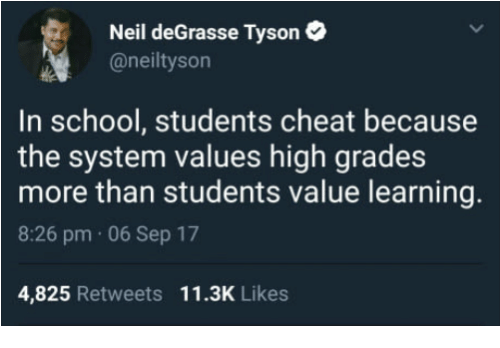
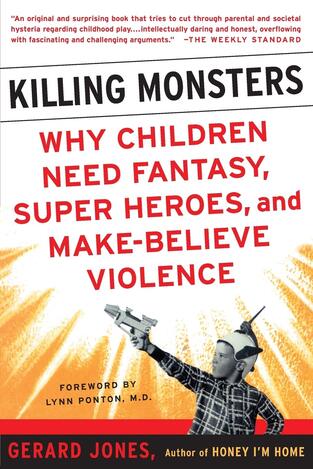
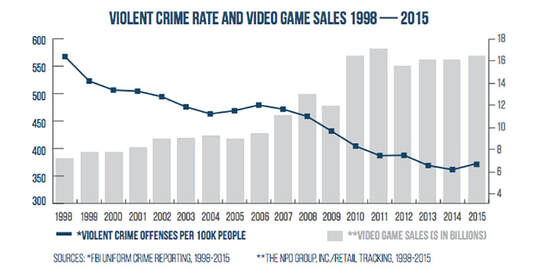

 RSS Feed
RSS Feed
